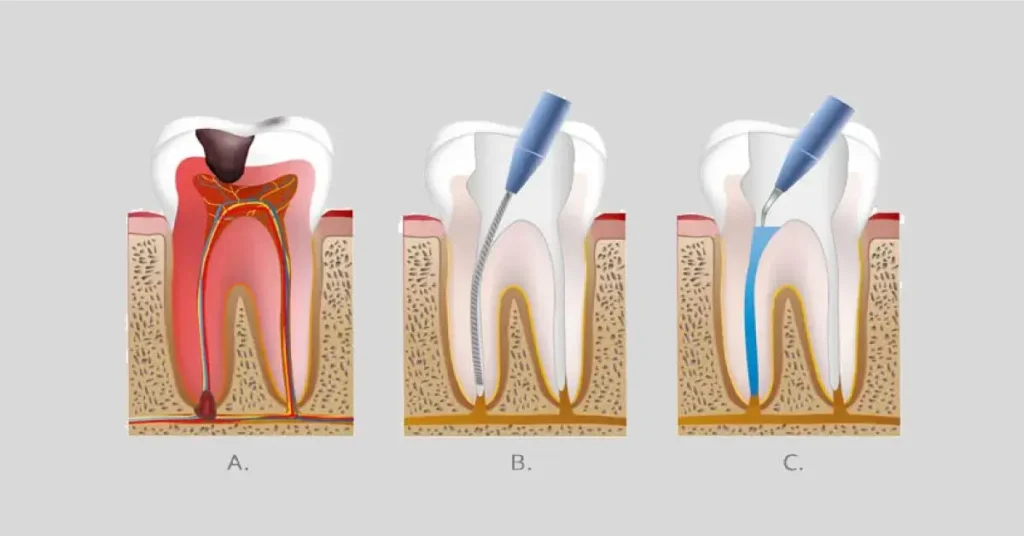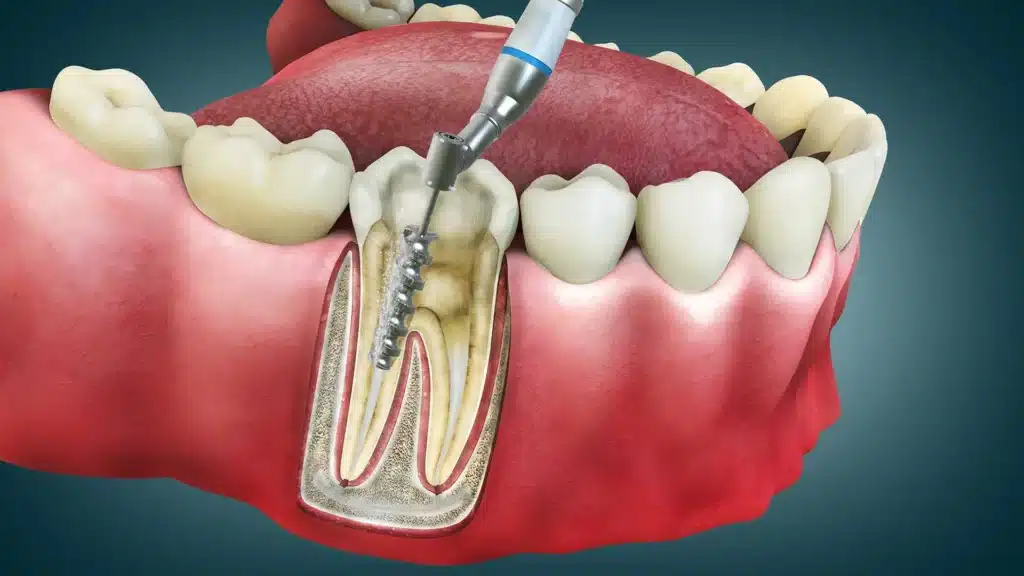Tooth pain can be one of the most intense and distracting experiences a person can face. It doesn’t just affect your ability to eat or sleep—it impacts your entire day. Often, this kind of pain is rooted deep inside the tooth, where the nerve and pulp live. When infection or inflammation reaches this inner core, a simple filling won’t do the job. You need something more advanced: root canal treatment.
Far from the scary reputation it once held, modern endodontic therapy is a safe, comfortable, and highly effective procedure that not only removes infection but also provides real tooth nerve pain relief—fast. In this article, you’ll learn how root canals work, why they’re often the best option to save a damaged tooth, and what to expect from the process read more.

What Is Endodontic Therapy and Why Is It Needed?
At the center of each tooth lies the dental pulp—a soft tissue that contains nerves, blood vessels, and connective tissue. When this pulp becomes infected due to deep decay, repeated dental procedures, or a crack in the tooth, the result is often sharp, throbbing pain and intense sensitivity. This is where endodontic therapy comes in.
Root canal treatment is a procedure designed to remove the inflamed or infected pulp, clean and disinfect the root canals inside the tooth, and then seal them to prevent further infection. The tooth is then usually restored with a crown to bring it back to full strength and function.
People often fear the words “root canal,” but the truth is the procedure is similar in comfort to getting a filling—and far better than living with the pain of an infected tooth. It’s one of the most reliable ways to achieve tooth nerve pain relief while keeping your natural tooth intact.
Signs You May Need a Root Canal Treatment
Recognizing the symptoms early can save your tooth and help you avoid more complex treatments. One of the most common signs is persistent toothache—especially one that throbs or worsens when lying down or chewing.
Sensitivity to hot or cold that lingers long after exposure is another red flag. You might also notice discoloration of the tooth, swelling in the gums, or the appearance of a small bump near the base of the tooth, which could be a sign of an abscess.
When any of these signs appear, it’s critical to consult your dentist as soon as possible. The longer you wait, the more the infection can spread—not just through the tooth, but to the jawbone or bloodstream in severe cases.
Thanks to endodontic therapy, you don’t have to lose the tooth. You can treat the problem at its source and return to pain-free living with confidence.

The Root Canal Procedure: Step by Step
Understanding the process helps ease the fear. The first step in root canal treatment is a clinical exam and possibly an X-ray to confirm the diagnosis. Once the tooth is confirmed to be infected or inflamed, your dentist or endodontist will numb the area with local anesthesia.
A small opening is then made in the crown of the tooth, allowing access to the pulp. The infected or dead tissue is carefully removed using fine instruments, and the inside of the canals is shaped, cleaned, and disinfected.
Once the canals are clean and dry, they are filled with a biocompatible material (usually gutta-percha) and sealed to prevent reinfection. A temporary or permanent filling is placed, and in most cases, a crown is scheduled shortly after to restore the tooth’s full function and appearance.
The entire endodontic therapy process usually takes one to two visits, and patients often report immediate or rapid tooth nerve pain relief after treatment.
Myths About Root Canal Treatment: What’s True and What’s Not
There are plenty of misconceptions around root canal treatment. Some believe it’s extremely painful, while others think it’s risky or likely to fail. These myths often stem from outdated practices or misinformation.
In reality, with today’s technology and anesthetics, endodontic therapy is no more uncomfortable than a typical filling. The goal of the procedure is actually to relieve pain, not cause it.
Another myth is that root canals are temporary and that the tooth will eventually need to be removed. The truth is, a successful root canal can last a lifetime when combined with a proper crown and good oral hygiene. It’s a long-term solution that saves your natural tooth and avoids the need for bridges or implants.
Finally, some worry that removing the nerve “kills” the tooth. While the nerve is no longer present, the tooth remains very much alive and functional, especially with the protection of a crown.
Long-Term Benefits of Root Canal Treatment
The most immediate benefit of root canal treatment is obvious: fast and lasting tooth nerve pain relief. But the benefits go much deeper.
By removing the infected pulp and sealing the canals, the spread of infection is halted, protecting your other teeth and even your overall health. Preserving your natural tooth also helps maintain proper chewing function, jawbone integrity, and the alignment of neighboring teeth.
A restored tooth with a crown looks and functions just like any other. You’ll be able to eat, speak, and smile confidently—without the gaps or complications that often follow extractions.
From a cost and health perspective, endodontic therapy is typically more affordable and less invasive than replacing a lost tooth with an implant or bridge.

When Is a Root Canal Not an Option?
While root canal treatment is highly effective, there are situations where it might not be the best solution. If the tooth is severely fractured below the gumline or lacks sufficient structure to support a crown, your dentist might recommend extraction instead.
Similarly, if the infection has spread extensively beyond the tooth or bone, further intervention may be necessary. That’s why early diagnosis is key. The sooner the issue is caught, the better your chances of saving the tooth through endodontic therapy.
If you’re not sure what your case requires, consult an experienced dentist or endodontist. They’ll guide you toward the safest and most effective treatment for your specific situation.
Final Thoughts: Say Goodbye to Tooth Pain, Not Your Tooth
Root canal treatment is a modern dental success story. It takes a once-feared procedure and turns it into a safe, routine method for restoring dental health. By choosing endodontic therapy, you’re choosing to keep your natural teeth, eliminate infection, and enjoy lasting tooth nerve pain relief without fear or discomfort.
Next time you experience tooth pain that won’t go away, don’t ignore it. You could be just one appointment away from saving your smile—and your sanity read more.
